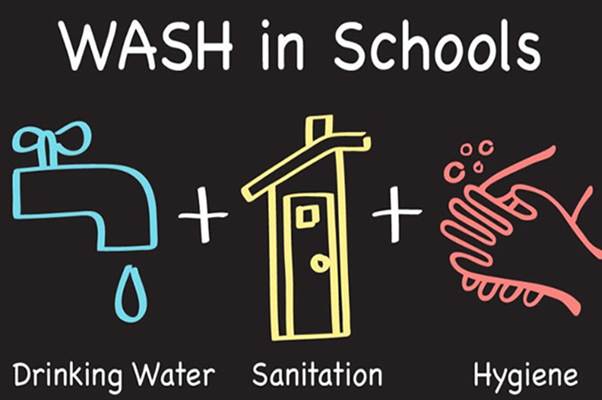In today’s world, water accessibility is one of the most pressing issues facing growing cities. With rapid urbanization and the ever-increasing population, ensuring a steady supply of clean and safe water has become a massive challenge. As you contemplate this issue, you might wonder: How can cities meet the water demands of their growing populations while avoiding potential water crisis? The truth is that growing cities around the globe are facing similar dilemmas.
In this article, we will discuss the underlying reasons why cities struggle with water accessibility, the contributing factors such as climate change and infrastructure, and what solutions are available. We will also explore the impacts of these challenges on the communities and economies of growing cities and offer insights into how Maji Na Ufanisi (MnU) is addressing this pressing issue.
A Detailed Explanation of Water Accessibility Challenges in Cities
As cities expand, meeting the water needs of their populations becomes increasingly difficult. Rapid urbanization and population growth exert tremendous pressure on existing water resources and infrastructure, exacerbating challenges related to water distribution and quality. Here’s a breakdown of the major factors contributing to these water accessibility issues:
Urban Population Growth and Overconsumption

In many parts of the world, cities are growing at an unprecedented rate. Urban population growth has increased water demand significantly, with residents using vast amounts for daily activities such as drinking, cooking, and sanitation. As more people move into cities, the need for water increases while the supply often remains the same, creating shortages.
Many urban water systems are outdated and were not designed to meet the needs of modern populations. Overconsumption is another concern, particularly in wealthier urban areas where water usage per capita can be much higher than in poorer regions. The growing population often leads to over-extraction of water from nearby rivers and aquifers, depleting these sources and leaving little for future generations.
Aging Infrastructure and Inefficiency
One of the greatest barriers to water accessibility is the state of urban water infrastructure. Many cities rely on old, deteriorating pipes and systems that are prone to leaks and contamination. In some cases, the infrastructure was built decades or even centuries ago, and it is not equipped to handle the increased load brought on by a growing population.
Additionally, inefficient water management practices exacerbate the problem. Water losses from leaks and inefficient irrigation systems can account for as much as 30-50% of the total water supply in some cities. When cities fail to invest in infrastructure upgrades, they continue to lose valuable resources to inefficiency, making it harder to meet demand.
Climate Change and Water Scarcity
Climate change is another critical factor contributing to water accessibility issues in growing cities. As the planet warms, weather patterns are becoming more erratic, resulting in prolonged droughts in some areas and heavy rainfall in others. Cities located in arid or semi-arid regions, in particular, face the growing risk of water scarcity due to reduced rainfall and increased evaporation rates.
Droughts not only affect the amount of water available but also reduce the quality of water in reservoirs, leading to higher treatment costs. Conversely, heavy rainfall can lead to flooding, overwhelming drainage systems and contaminating water supplies with pollutants and untreated sewage.
Pollution and Contamination
Urbanization also brings with it increased pollution, which poses a significant threat to water quality. Industrial and agricultural runoff, improper waste disposal, and untreated sewage often find their way into rivers, lakes, and underground aquifers, contaminating water sources that are vital for urban populations.
Water pollution makes it even more difficult for cities to provide clean water to their residents. As contamination levels rise, the cost of treating water increases, placing further strain on municipal budgets and reducing the availability of potable water.
Economic Constraints and Political Challenges
In many rapidly growing cities, economic and political issues hinder efforts to improve water accessibility. Developing countries, in particular, may lack the financial resources to invest in necessary infrastructure upgrades. Corruption and mismanagement of funds also play a role, leading to inefficient distribution of water resources and leaving some communities underserved.
Political instability can prevent the development of comprehensive water management policies, leading to further delays in addressing the growing problem of water scarcity. Without strong governance and strategic planning, the challenge of water accessibility will continue to grow as cities expand.
Rising Inequality in Water Distribution
Inequality in water distribution is another pressing issue in growing cities. Wealthier urban areas often have better access to clean water, while poor communities, particularly in slums and informal settlements, struggle to meet their daily water needs. These underserved communities may rely on unregulated water sources, increasing their risk of waterborne diseases.
In cities with unequal water distribution, the poorest residents are often forced to pay higher prices for water from informal vendors, further entrenching the cycle of poverty. This inequality exacerbates health and economic disparities, leaving vulnerable populations at a severe disadvantage.
The Impact of Water Accessibility Challenges on Communities and Economies
The challenges of water accessibility in growing cities have far-reaching consequences for both individuals and society as a whole. Without reliable access to clean water, public health deteriorates, with diseases such as cholera, dysentery, and typhoid becoming more prevalent. Poor sanitation and hygiene further exacerbate the spread of waterborne diseases, leading to higher healthcare costs and loss of productivity.
Economically, water shortages can cripple industries that depend on a steady supply of water, such as agriculture, manufacturing, and energy production. Without enough water to meet demand, businesses may be forced to scale back operations or relocate, leading to job losses and stunted economic growth.

Solutions for Improving Water Accessibility in Cities
Addressing the challenges of water accessibility in growing cities requires a multi-faceted approach that involves governments, private organizations, and communities working together. Here are some strategies that can help cities improve their water management:
- Upgrading Infrastructure: Investing in modernizing water infrastructure is crucial for reducing water losses and ensuring a more efficient distribution system. Governments and local authorities must prioritize the repair and replacement of aging pipes and systems to reduce leaks and contamination.
- Promoting Water Conservation: Encouraging residents and businesses to adopt water-saving practices can help reduce demand and alleviate pressure on existing water resources. Simple measures such as using low-flow fixtures, fixing leaks, and implementing rainwater harvesting systems can have a significant impact.
- Implementing Smart Water Management Systems: The use of technology can greatly enhance water management in cities. Smart water meters, sensors, and data analytics can help monitor water usage, detect leaks, and optimize distribution.
- Enhancing Water Recycling and Reuse: Recycling and reusing water can help alleviate shortages. Greywater systems, for example, allow for the reuse of water from sinks, showers, and washing machines for irrigation or toilet flushing.
- Strengthening Governance and Policy: Governments must implement comprehensive water management policies that address both supply and demand challenges. Collaboration with private and non-profit organizations, such as Maji Na Ufanisi, can also help bridge the gap in resource management and project implementation.
- Public Awareness Campaigns: Educating citizens about the importance of water conservation and responsible water use is essential. Public awareness campaigns can help change behaviors and foster a culture of sustainability.
How Maji Na Ufanisi (MnU) is Helping
Maji Na Ufanisi (MnU) has been at the forefront of tackling water accessibility issues in Kenya. With its mission to provide sustainable water, sanitation, and hygiene (WASH) solutions, MnU focuses on empowering marginalized communities, particularly in urban and semi-arid regions. By rehabilitating water sources, building rainwater harvesting systems, and promoting efficient water use, MnU ensures that even the most vulnerable populations have access to clean water.
MnU’s commitment to innovation is evident in its community-driven projects, which not only improve water accessibility but also enhance resilience to climate change. By involving local communities in water management and providing education on water conservation, MnU helps foster long-term sustainability and equitable access to water resources.
Conclusion
The challenges of water accessibility in growing cities are complex, but they are not insurmountable. By upgrading infrastructure, implementing smart water management systems, and fostering collaboration between governments and organizations, we can improve water accessibility for millions of urban residents. Organizations like Maji Na Ufanisi play a crucial role in bridging the gap, ensuring that even the most marginalized communities have access to this vital resource.
FAQs:
- What are the main causes of water scarcity in cities?
Urbanization, population growth, aging infrastructure, pollution, and climate change are key factors.
- How does climate change affect water accessibility in urban areas?
Climate change causes droughts and erratic rainfall, leading to water shortages and contamination.
- What can individuals do to conserve water in cities?
Individuals can fix leaks, install low-flow fixtures, collect rainwater, and use water-efficient appliances.
- How can cities improve their water infrastructure?
Cities can invest in modernizing pipes, reducing leaks, and adopting smart water management technologies.
- What are the health risks associated with poor water accessibility?
Poor water access can lead to waterborne diseases like cholera, typhoid, and dysentery, affecting public health.
- What role do governments play in solving urban water challenges?
Governments must develop policies, invest in infrastructure, and ensure equitable water distribution.
- How does inequality impact water distribution in growing cities?
Poor communities often lack access to clean water and pay higher prices for informal water sources.
- What are some innovative solutions to water shortages in cities?
Solutions include water recycling, greywater systems, smart water meters, and rainwater harvesting.
- How do water accessibility challenges affect urban economies?
Water shortages can disrupt industries, reduce productivity, and increase the cost of living in cities.
- What is Maji Na Ufanisi’s approach to solving water accessibility issues?
MnU focuses on community-driven water projects, upgrading infrastructure, and educating on water conservation.



